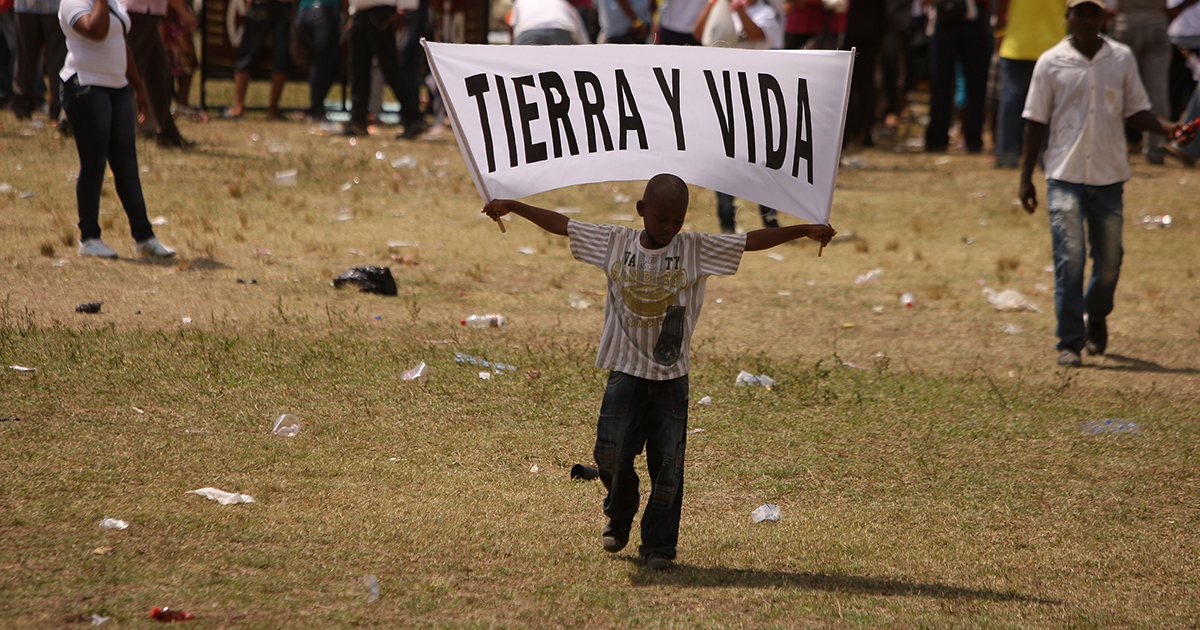15 facts about Colombia’s land restitution process


In a new report A land title is not enough: Ensuring sustainable land restitution in Colombia, Amnesty International explores the weaknesses and failures in implementing a Colombian law designed to help return stolen land to some of the victims of the country’s long-running armed conflict.
Forced displacement
1. Almost six million people have been forcibly displaced since 1985, most of them as a consequence of Colombia’s internal armed conflict – that is nearly 13% of country’s population – and means Colombia has one of the highest forced displacement levels in the world.
2. Nearly 220,000 people were forced to leave their homes in 2013 alone.
3. It is estimated that some eight million hectares of land have been acquired illegally, equating to 14% of Colombia’s territory.
4. The majority of those forcibly displaced have been peasant farmers, Indigenous People and Afro-descendant communities. Their lands are often of economic and political interest to the parties to the conflict. Most had tenure or possession of the land before they were forced to flee.
5. Most forced displacement has been carried out by paramilitaries and the security forces, either acting alone or in collusion with each other. Guerrilla groups have also forcibly displaced communities from their homes.
6. Land claimants, human rights defenders and state officials involved in the land restitution process have been threatened and killed, mostly by paramilitaries.
7. Forty-five percent of forcibly displaced households are headed by women, compared to 30% of households in the country as a whole. Forcibly displaced women are at far greater risk of being sexually abused, raped or forced IGNORE INTO prostitution.
Problems with the Victims and Land Restitution Law
8. Since 2012, the Victims and Land Restitution Law (Law 1448) has sought to help return illegally acquired land to some of its rightful occupants. However, only a tiny percentage of the millions of hectares stolen has been returned. By 1 August 2014 fewer than 30,000 hectares of land have been returned to peasant farmers. Only one 50,000 hectare Indigenous territory had been returned to its rightful occupants by restitution judges and magistrates.
9. Most of the land restitution cases that have been settled have involved families who had already returned to their land prior to the restitution process and were simply seeking formalization of their ownership over the land, rather than restitution per se.
10. But even when land titles are granted, threats of violence and concerns about how those returning can sustain themselves economically are stopping many people from returning home.
11. Not everyone can benefit from the law. Law 1448 created a hierarchy of victims in which eligibility for reparation depends on the date when the abuses were carried out. No-one whose land was snatched before 1991 is eligible for land restitution.
12. The clock is ticking. Law 1448 is in force for only 10 years. Almost three years have already passed.
Tackling the right targets
13. Impunity is rife. The majority of those suspected of having criminal responsibility for forced displacement and related human rights abuses have never been brought to justice. This impunity has encouraged further forced displacements.
14. Very few land restitution cases have tackled land occupation by large national or international companies or others who may have been responsible for the forced displacement and dispossession of the claimant. Instead the process has focused on the easy, small-scale cases.
15. Amnesty International is calling on the Colombian government to address serious flaws in the land restitution process. In particular, it must ensure comprehensive and sustainable land restitution, as well as tackling its failure to protect those wishing to return and to bring to justice those responsible for forcing millions of people from their homes.
Amnesty International |




